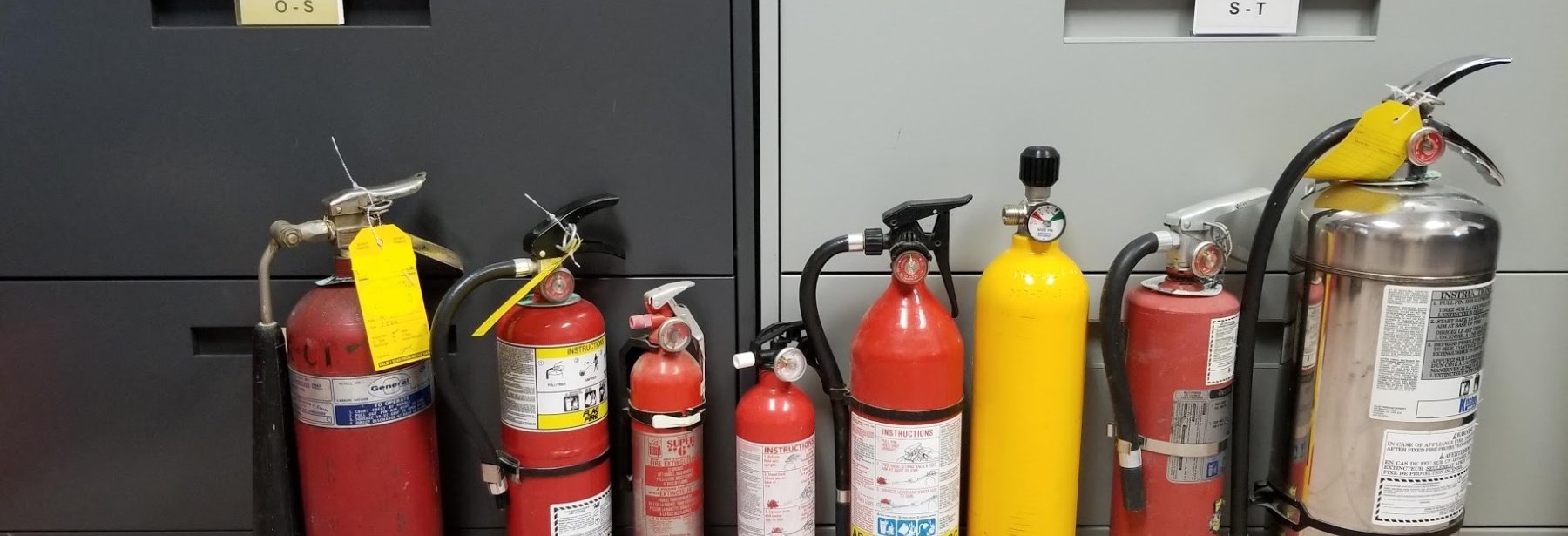Fire Extinguishers
Portable fire extinguishers can be the first thing used to contain or put out a small fire until the fire department arrives. Fire extinguishers are not designed for use on large or spreading fires. For more information click here Fire Extinguisher Information
Know when to go. Fire extinguishers are one element of a fire response plan. The most important element is getting out to safety.
Before you fight any fire, be sure that:
- You know how to use the fire extinguisher
- Everyone else has left the building and someone is calling 911
- The fire is small, confined and not spreading
- You have a clear escape route
- You have the right type of extinguisher for the type of fire that is burning
Choosing an extinguisher
Extinguishers have labels with standard symbols or letters for the classes of fire they can put out. Check and match these symbols to the contents in the room before buying and installing an extinguisher.
All extinguishers must:
- Be rated for the type of fire they can extinguish
- Be large enough to handle the fire
- Be in working condition and fully charged
- Be accessible and
- Be used by someone trained in the proper use of the extinguisher
No fire extinguisher can be used safely and effectively for every type of fire. Some contain chemicals that will not work in certain situations and can even cause harm if not used correctly.
Common Types of Extinguishers
Dry Chemical Extinguisher
There are two types of fire extinguishers that use a dry chemical:
- Multipurpose dry chemical uses ammonium phosphate as the extinguishing agent. It is effective on A, B, and C class fires. This chemical is corrosive and must be scrubbed from surfaces after use. These extinguishers are very common and found in schools, homes, hospitals and offices.
- Regular dry chemical uses sodium bicarbonate as the extinguishing agent. It is capable of handling B and C class fires. Sodium bicarbonate is easy to clean and nontoxic. These extinguishers found in garages, kitchens and laboratories.
Carbon Dioxide Extinguisher
- These extinguishers contain liquid CO2 that is discharged as a gas
- They can be used on B and C class fires
- CO2 does not leave a harmful residue and is environmentally friendly. It also poses very little danger to electronics and is used effectively in laboratories, computer rooms and other areas with sensitive equipment
Water Extinguisher
- These extinguishers are suited for A class fires only. In B class fires, the water will spread the flames. In a C class fire, the water is conductive and poses a risk of electric shock to the operator
- Since the agent used is water, these extinguishers are inexpensive and environmentally friendly
For more information about different classes of fire, visit the National Fire Protection Association's website.
How to use a Fire Extinguisher
To use an extinguisher, remember the acronym PASS:
- Pull the pin or other lever that unlocks the operating
- Aim low. Point the extinguisher nozzle or hose at the base of the fire
- Squeeze the lever or button above the handle to discharge the extinguishing agent. To stop the discharge, let go of the lever.
- Sweep the nozzle or hose from side to side. Move carefully toward the flames and keep the extinguisher aimed at the base of the fire. Continue to sweep back and forth
Always read the instructions that come with the fire extinguisher and become familiar with its parts and use before needed.
A list of reputable companies can be found online. Local hardware retailers also sell fire extinguishers.








